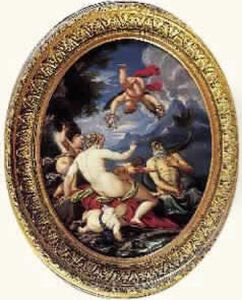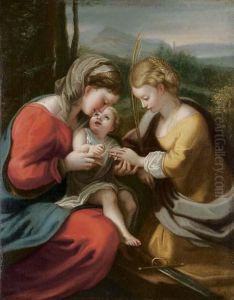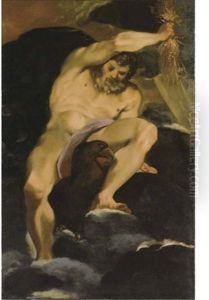Jean Boulanger Paintings
Jean Boulanger was a French painter known primarily for his portraits and religious compositions. Born in Troyes, France, in 1606, Boulanger was active during the 17th century, a period that was characterized by the Baroque style in European art. His exact training and early career are not thoroughly documented, but it is known that he was influenced by the prevailing Baroque aesthetic, which was marked by dramatic use of light, rich color, and a sense of movement.
Boulanger's work, like that of many artists of his time, was closely linked to the patronage he received from the church and from French nobility. His style was marked by a sense of elegance and a certain grandeur, which suited the tastes of his patrons. Boulanger was skilled in creating a sense of realism in his works, particularly in his portrayal of fabrics and textures, which added a tactile quality to his paintings.
Throughout his career, Jean Boulanger received numerous commissions for religious works, including altarpieces and decorations for churches. These works often featured biblical scenes and figures, rendered with a sense of drama that was typical of the Baroque period. His portraits, on the other hand, showcase his ability to capture the likeness and personality of his subjects. These portraits are less well-known than those of his contemporaries, such as Philippe de Champaigne, but they nonetheless contribute to the understanding of French portraiture in the 17th century.
Boulanger's influence was somewhat regional, with most of his works remaining in France. His paintings can be found in various churches and museums, and they continue to be studied for their contribution to the Baroque period in French art. Jean Boulanger passed away in 1660, leaving behind a legacy of artwork that reflects the opulence and religious devotion of his era.


